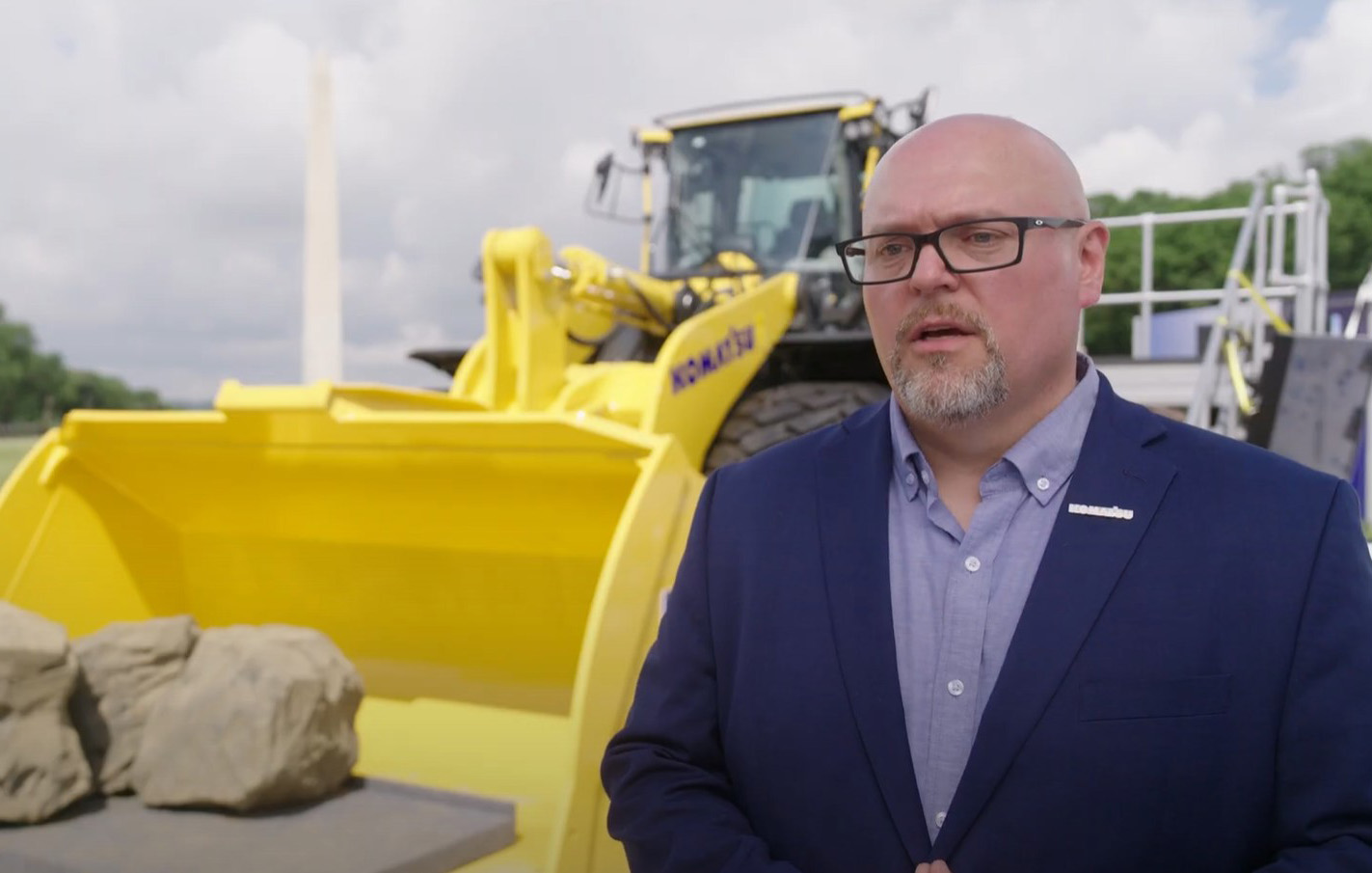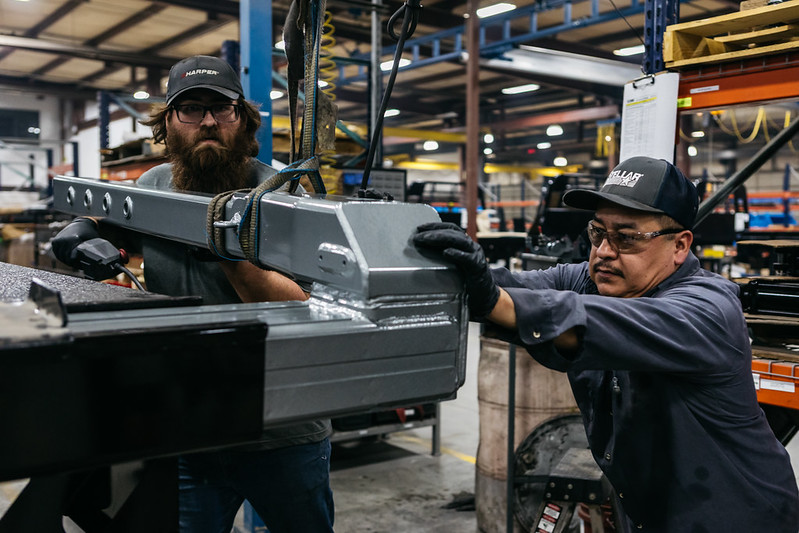Farmers, construction contractors, and non-road equipment manufacturers are on a bumpy ride toward what is shaping up to be promising times ahead.
“In the short and medium terms, the economic environment remains very challenging,” said Al Melhim, AEM’s senior director of business intelligence. “High interest rates, falling commodity prices, and rising inventories are still exerting downward pressure on AEM’s three key sectors. These conditions have led to tighter margins, cautious capital investment, and slower equipment turnover. Additionally, policy-related headwinds such as high tariffs and labor shortages have continued to strain operational efficiency and workforce availability.”
The outlook starts to improve as you look out on the horizon, though.
“We see a shift toward positive momentum as a result of The One Big Beautiful Bill Act (OBBBA) framework,” Melhim said. Beneficial features of the OBBBA include numerous tax incentives, extended farm support, biofuel and rural energy incentives, and infrastructure spending—all of which can serve as economic catalysts for farmers, construction contractors, and non-road equipment manufacturers.
Melhim was a featured presenter during AEM’s “Business Intelligence Q3 Equipment Market Outlook” webinar on Aug. 7. Melhim, together with Tom Hopgood, a GlobalData Construction Economist, shared insights into how the agriculture and construction industries have been faring, and what’s expected over the second half of 2025 and beyond.
AEM members are encouraged to stay on top of emerging trends with our quarterly Equipment Market Update webinars. Agriculture and construction experts break down industry issues and pinpoint crucial changes in the landscape to help you refine your company’s strategy.
Save your seat for the Nov. 6, 2025, webinar.
Agriculture Equipment Shipments
Low-horsepower tractors. After a rough first quarter, the sales pace has picked up in recent months. Still, as of June, U.S. shipments were 10% lower than a year ago, and 28% below the five-year average. Melhim said there is reason to have “cautious optimism” moving forward.
Up in Canada, sales slowed in Q2 after a strong Q1. Shipments in Q2 were still 4% higher than a year ago, yet they remain 20% below the five-year average.
High-horsepower equipment. The impact of prolonged pressures on farming, such as weak margins and strained cash flow, are now visible in the sale of large tractors and combines. As of June, sales were 31% lower than a year ago and 25% below the five-year average. Melhim said this soft demand could persist unless commodity prices stabilize. Heading into harvest, production could exceed demand, which isn’t helpful. On the other hand, it is helpful that provisions of the OBBBA support farming. But until the positive effects of that legislation begin to be felt, Melhim said manufacturers should brace for soft demand for the remainder of 2025.
Up in Canada, high-horsepower equipment got off to a strong start in Q1 but was followed by a steep drop in Q2. Through June, sales were 4% lower than a year ago, but they were still 12% ahead of the five-year average.
Leading Factors Impacting Ag Equipment Shipments
Used equipment markets. Auction prices have been increasing and are more in line with asking prices, which reflects market efficiency and seller leverage. This is typically a precursor to increased demand for new equipment, since some buyers may simply look to new equipment now that they’ve lost leverage in the used market.
Tax rule incites investment. The restoration and expansion of accelerated depreciation is a positive development,
as it typically has a positive influence on the sale of high-horsepower units. Why? The bigger and more expensive the equipment, the bigger the impact of accelerated depreciation.
Interest rates. The high-interest rate environment continues to dampen equipment demand. New equipment is getting pinched the most. Financed new equipment sales dropped at an extremely high CAGR of 11% over the past year. Financed used equipment got hit hard too, dropping 7%. “It’s a heavy weight that continues to linger on the industry,” Melhim said. “The elevated interest rates have increased borrowing expenses, making it harder for farmers to justify large capital investments in new machinery.”
Crop margins remain under pressure. As touched on, the upcoming harvest is expected to be large and outpace demand. Thus, the USDA is projecting tight margins that shy from break-even levels. That could delay farmers’ investments in new machines, though the investment incentives provided in the OBBBA could offset some of the effects of tight crop margins.
Explore the newly launched AEM Global Trade Report for insights into international trade dynamics in agriculture and construction equipment. These reports leverage detailed trade data from the U.S. Census Bureau to analyze imports, exports, and trade balances across a wide range of product groups. Learn more.
Global Construction
After a volatile first half of the year, forecasters are calling for 2.27% growth in global construction output. That’s a downward revision from 2.8% earlier in the year.
Forecasters are expecting more stabilized improvement moving forward with 3.3% growth anticipated in 2026, and then roughly 3.75% each year from 2027-2029. Asia-Pacific will continue to be the largest global market, followed by Europe and North America. The MENA Region (Middle East and North Africa) is expected to see the most growth over the next four years.
The Energy & Utilities and Infrastructure segments have been driving a lot of global construction activity, and collectively account for nearly 40% of total global output. Residential is also a big segment at nearly 35%. Residential has been a drag on global output in recent years, but is expected to return to growth this year and onward.
The U.S. Construction Market
Construction output in the U.S. is expected to increase just 1.02% this year, down from a forecast of 4% growth earlier in the year. Growth of 1.4% is then expected in 2026, followed by roughly 2% per year from 2027-2029.
Impacts of the OBBBA are not factored into forecasts yet, and they could provide a bit of a boost. The Industrial segment is expected to be a big benefactor of several OBBBA provisions. Energy & Utilities is also expected to grow, with the most activity happening in conventional energy sectors now that the Trump Administration is in office. Residential construction is also set to return to growth this year, and then grow steadily through 2029.
Then there’s the rapid rise in the cost of construction materials. Overall, construction input prices were 2.1% higher in June than one year ago, and 42.1% higher than the eve of the pandemic in February 2020. Here’s a look at some specific construction materials:
- Fabricated structural metal products – 5.8% and 59.2%
- Copper wire and cable – 0.9% and 54.9%
- Steel mill products – 5% and 64.5%
- Adhesives and sealants – 4.6% and 40.2%
- Brick and structural clay tile – 1.3% and 32.6%
- Lumber and wood products – 1.5% and 23.6%
- Construction equipment – 2.7% and 33.4%
Another trend to keep an eye on is FDI (foreign direct investment) in North America. Capex invested in opened FDI projects in the U.S. waned by 16% in Q1 (compared to previous quarter), and another 36% in Q2.
Forecasters are now watching how the FDI trend materializes over the next several months as the new tariffs and other regulations begin to take hold. That’s about all a non-road equipment manufacturer, farmer, or construction contractor can do as well. Short- and medium-term challenges remain, but long-term gains could be had in the years ahead.
Learn More
In addition to its quarterly Equipment Market Update webinars, AEM continues to offer a wide range of other Business Intelligence and market data products. For more information, contact your Account Success Advisor.





